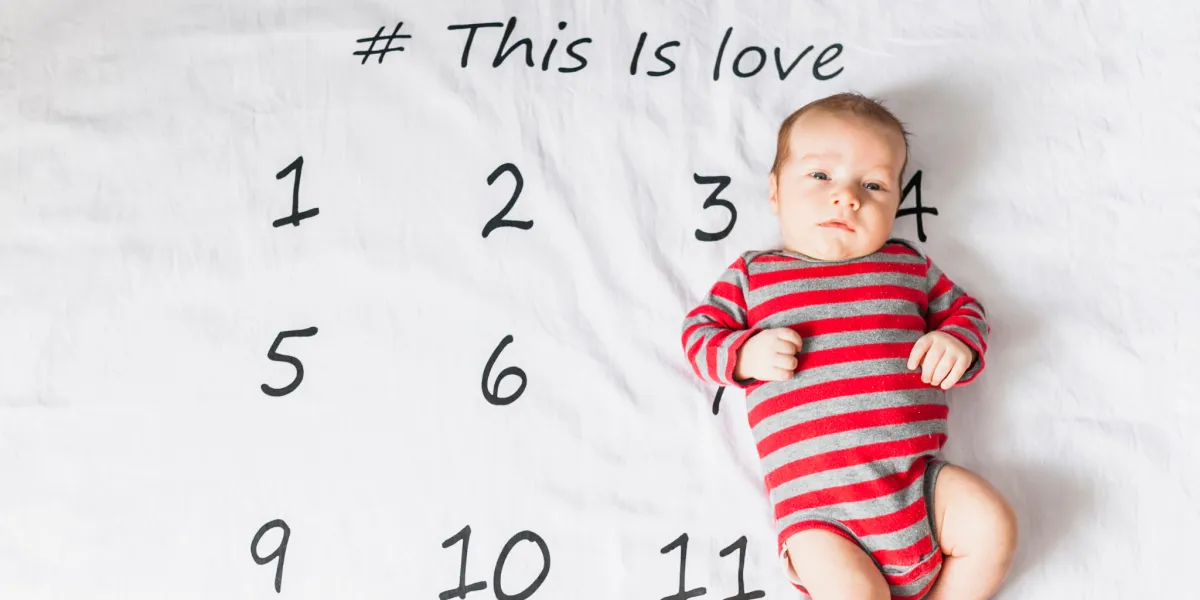
Myth vs. Medicine: Tracking Developmental Milestones—What to Expect Month by Month
Myth: “Every baby should hit milestones at the same age.”
Medicine: Developmental milestones are not rigid deadlines—they're broad markers that most children reach within a range. Normal development varies widely, and falling slightly outside the average isn’t always a sign of a problem.
Tracking Developmental Milestones: What to Expect Month by Month
Tracking your baby's development is both exciting and essential. As a pediatrician and parent, I've marveled at how each child grows uniquely. Understanding typical developmental milestones can help you support your child's growth and identify when additional guidance might be beneficial. The American Academy of Pediatrics (AAP) provides a comprehensive framework for these milestones. Here's a month-by-month overview for the first year:
1 Month: Building Connections
At one month, babies begin to engage more with their surroundings. They may focus on faces, respond to sounds, and exhibit jerky arm movements. I remember watching my own child start to recognize my voice during this stage, a heartwarming experience for any parent.
2 Months: Emerging Social Smiles
By two months, infants often start to smile at people, a milestone that delights parents. They also begin to coo and make gurgling sounds, signaling early communication skills. These interactions are foundational for social development.
4 Months: Enhanced Interaction
At four months, babies typically enjoy playtime, respond to affection, and may mimic facial expressions. They also start to reach for toys and can hold their head steady without support. Engaging with your child through play and conversation fosters their cognitive and motor skills.
6 Months: Increased Mobility
Around six months, infants often roll over in both directions and begin to sit without support. They respond to their own name and may start babbling consonant sounds. Introducing a variety of safe toys can encourage exploration and movement.
9 Months: Exploration and Imitation
By nine months, many babies crawl, pull to stand, and use a pincer grasp to pick up objects. They may understand "no" and imitate gestures like waving. I recall my child eagerly exploring every corner of the house during this phase, keeping us on our toes!
12 Months: First Steps and Words
At one year, children may take their first independent steps and say simple words like "mama" or "dada." They often enjoy imitating others and can follow simple directions. Celebrating these achievements encourages continued learning and confidence.
🔬 Myth vs. Medicine Spotlight: What Research Says
🧠 Developmental milestones are ranges, not deadlines
It’s a common fear that if a child doesn’t walk, talk, or crawl “on time,” there’s something wrong. But the science says that development is a spectrum—and individual timing varies.
📚 Key Study #1
A 2022 publication by the American Academy of Pediatrics in Pediatrics introduced updated, evidence-informed milestones based on the principle that milestones should reflect behaviors that at least 75% of children can be expected to exhibit at a certain age. This update emphasized using milestones as flexible guides, not rigid checklists, and aimed to reduce unnecessary concern over minor variations.
📖 Key Study #2
A review published in Translational Pediatrics categorized developmental expectations into five domains: gross motor, fine motor, language, cognitive, and social-emotional. The study reinforced that delays in one area do not always signal global developmental problems, especially when other areas remain intact. This framework encourages parents and providers to assess the full developmental picture, not just isolated behaviors.
🩺 Pediatrician Insight
As a pediatrician and parent, I’ve seen how easy it is for parents to compare their child with others. One of my children walked early but talked later, while another spoke in full sentences before learning to climb stairs. Both are thriving today. Development doesn’t follow a script—it follows your child’s unique rhythm. The goal is steady progress, not perfect timing.
Personal Reflections on Development
Reflecting on my own children's growth, I noticed distinct differences in their developmental timelines. One child was an early walker but took longer to develop verbal skills, while another spoke early but was more cautious with physical milestones. These variations are normal and highlight the individuality of each child's development.
When to Seek Support
While variations are typical, certain signs may indicate the need for professional guidance. If your child isn't meeting multiple milestones or you've observed significant delays, it's advisable to consult with a pediatrician. Early intervention can be crucial in addressing developmental concerns.
We're Here to Help
Understanding and tracking developmental milestones can sometimes feel overwhelming. If you have questions or need support in assessing your child's development, please reach out. As a pediatrician and fellow parent, I'm here to provide guidance and reassurance as you navigate this incredible journey.
For a detailed list of developmental milestones, refer to the American Academy of Pediatrics' guidelines.
📑 References
Zubler JM, Wiggins LD, Macias MM, et al. Evidence-Informed Milestones for Developmental Surveillance Tools. Pediatrics. 2022;149(3):e2021052138. doi: 10.1542/peds.2021-052138
Brown KA, Parikh S, Patel DR. Understanding basic concepts of developmental diagnosis in children. Transl Pediatr. 2020 Feb;9(Suppl 1):S9-S22. doi: 10.21037/tp.2019.11.04. PMID: 32206580; PMCID: PMC7082247.
